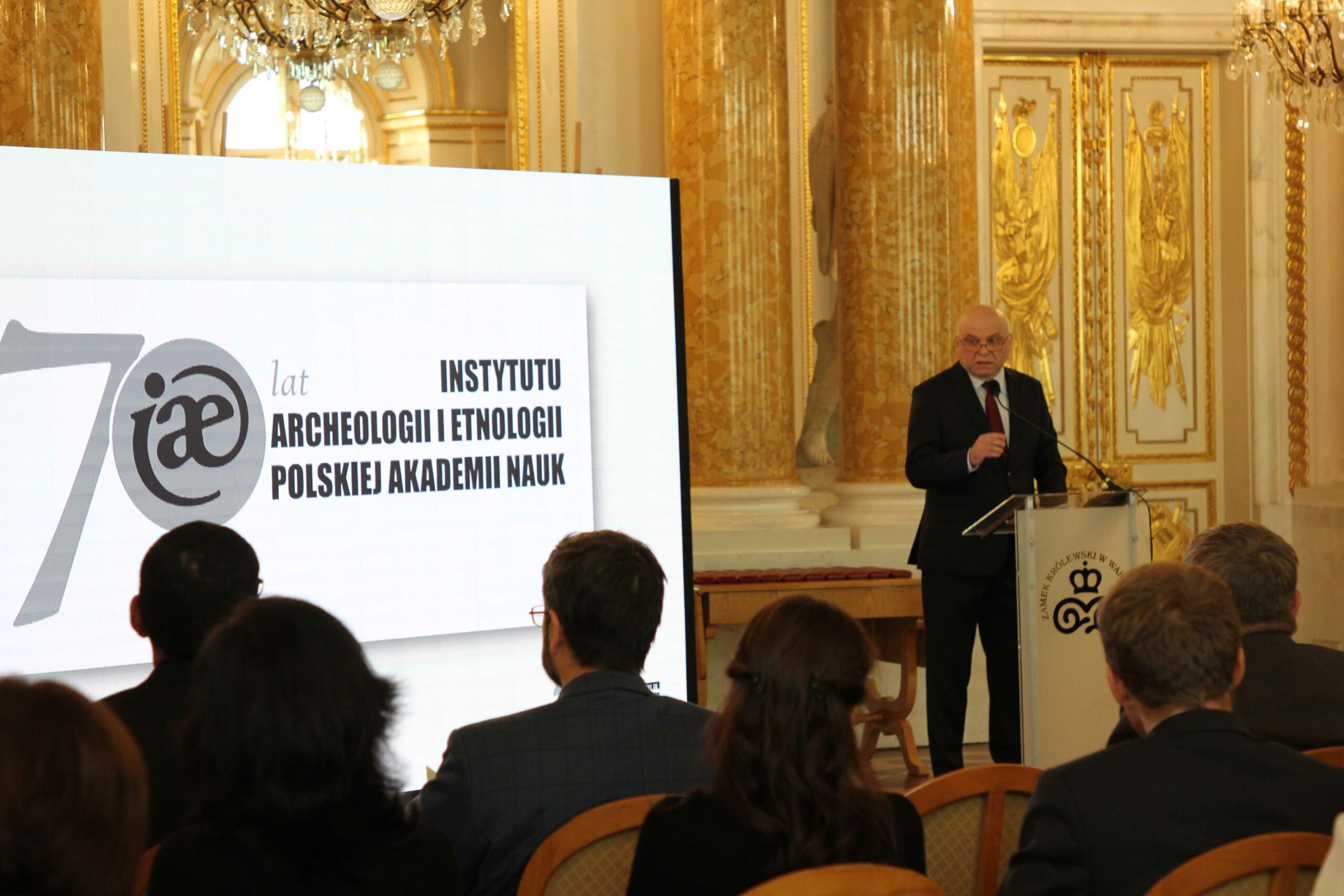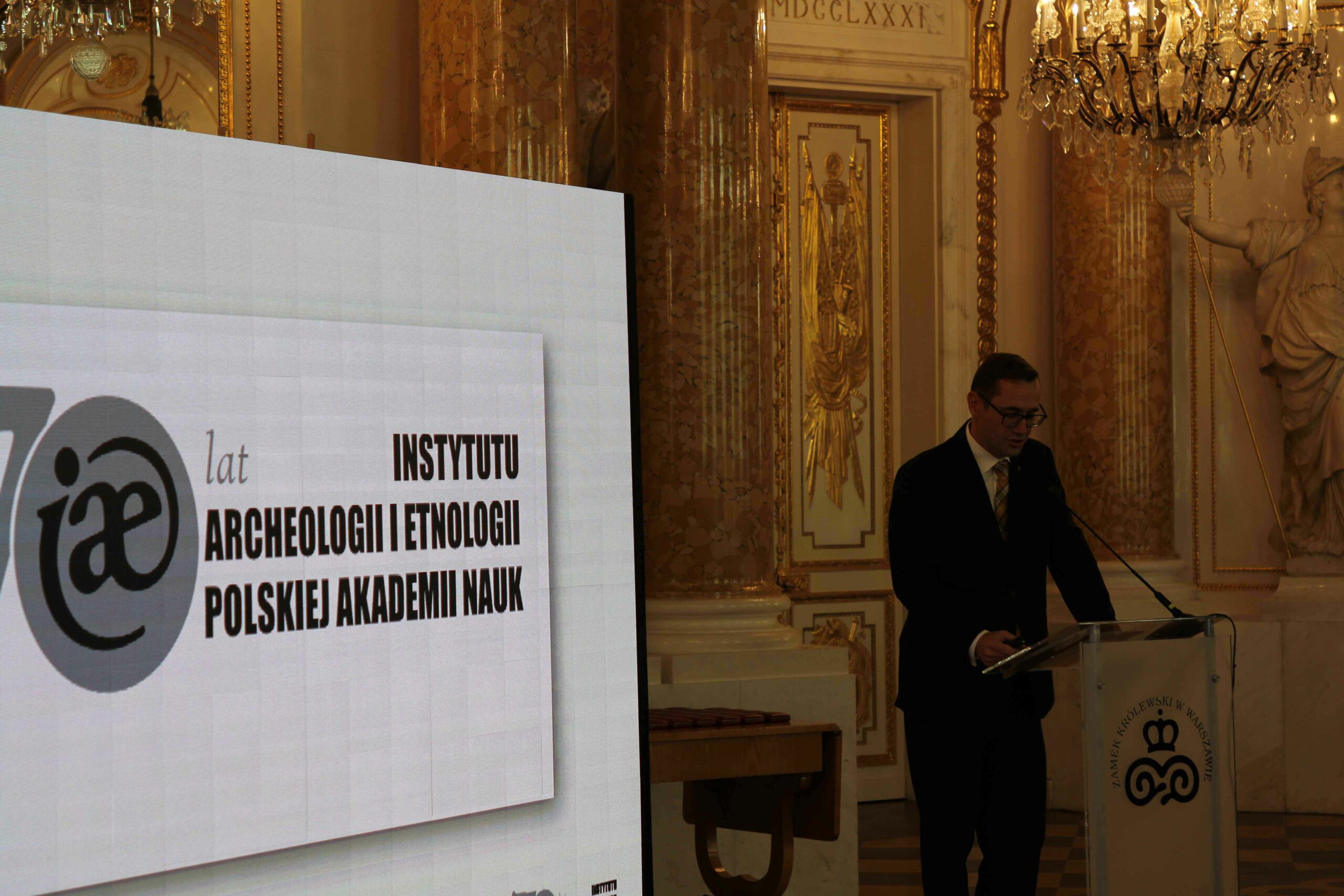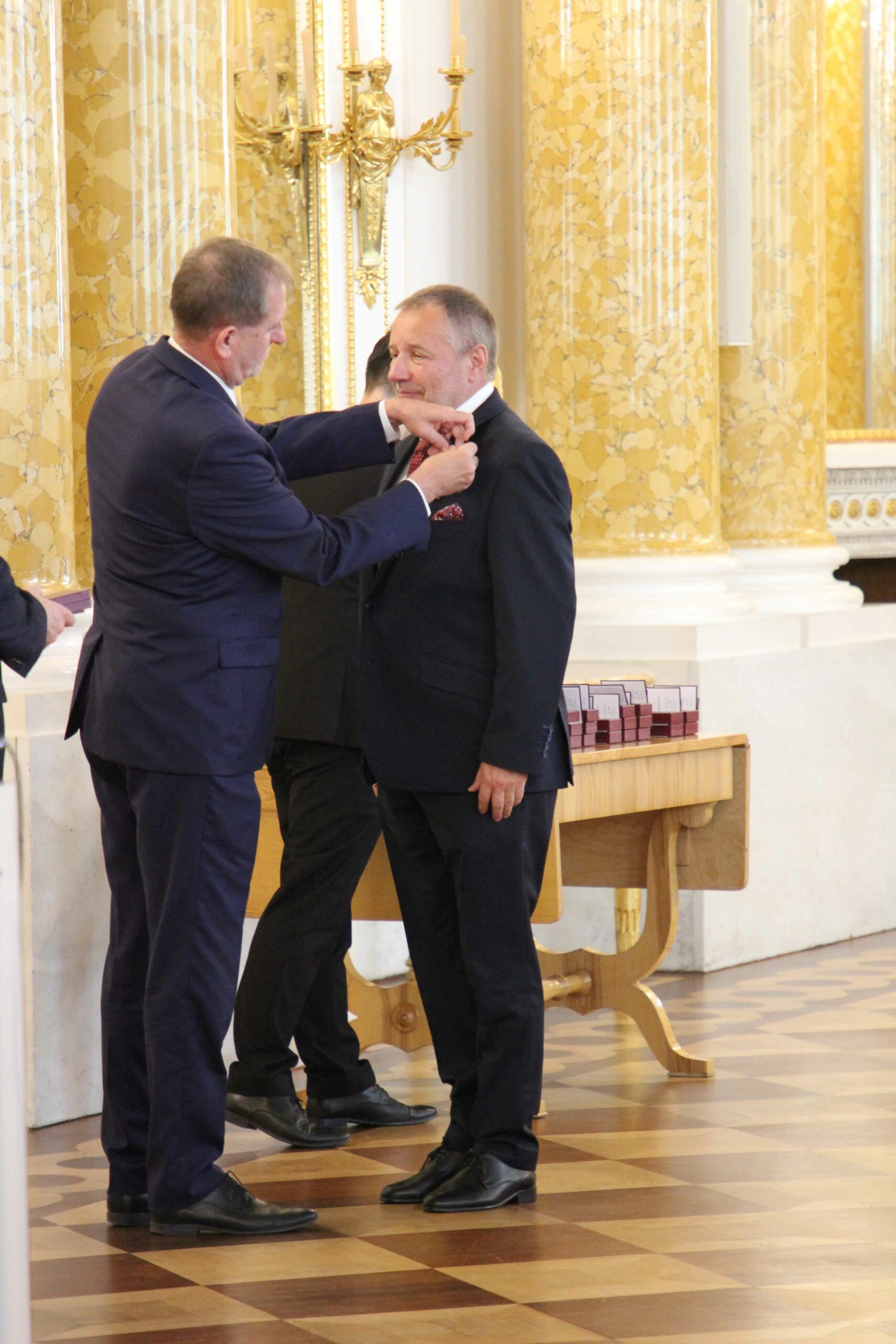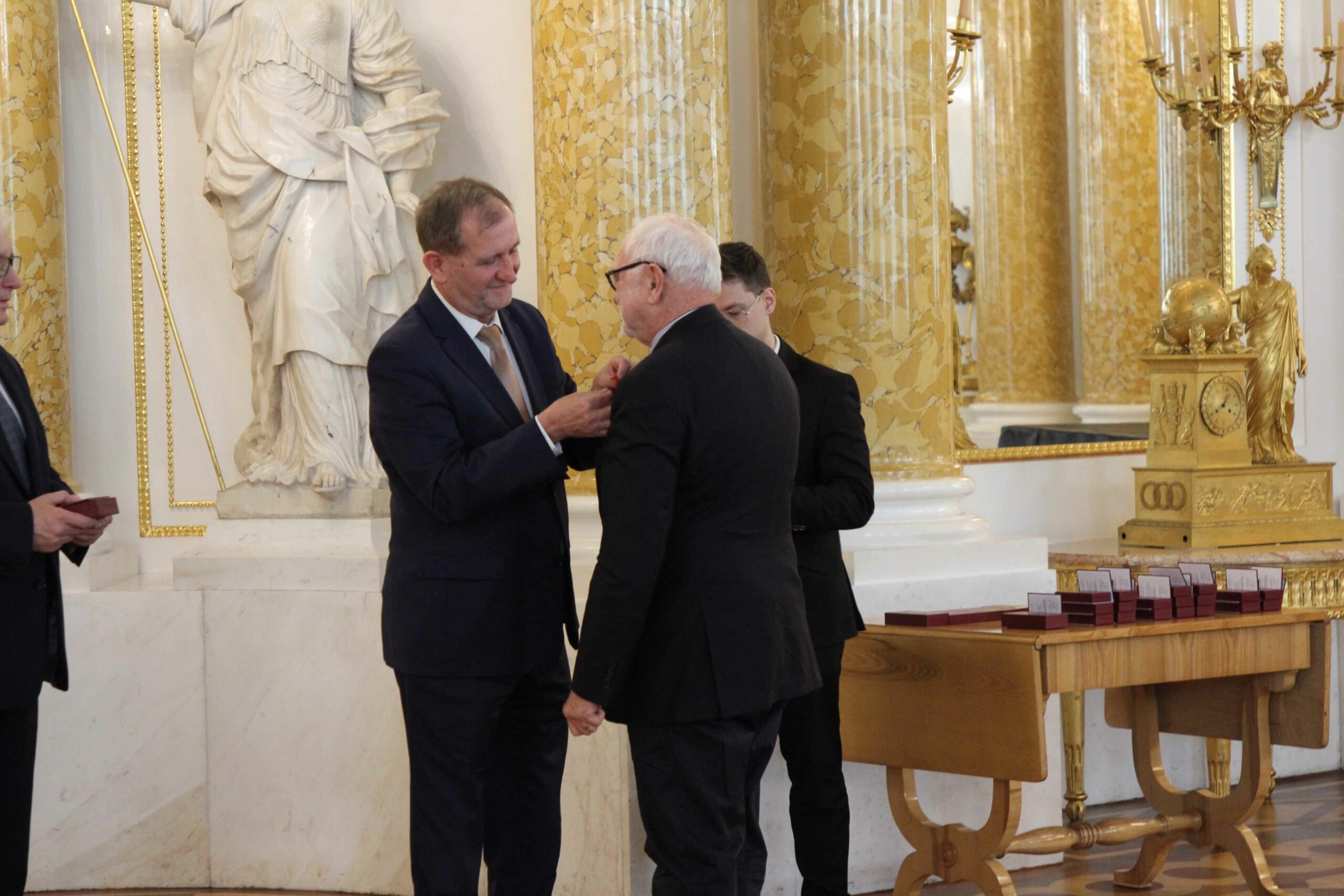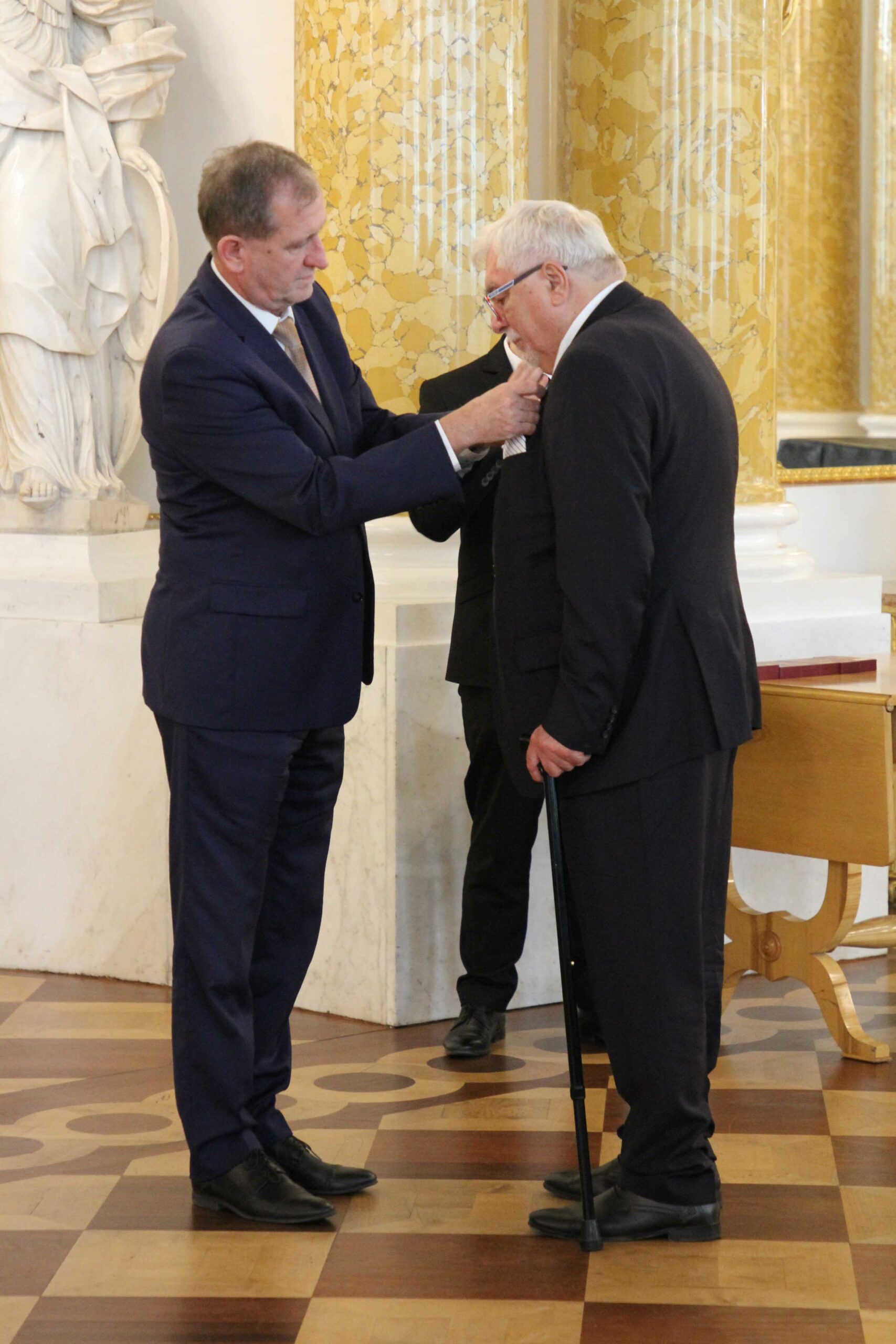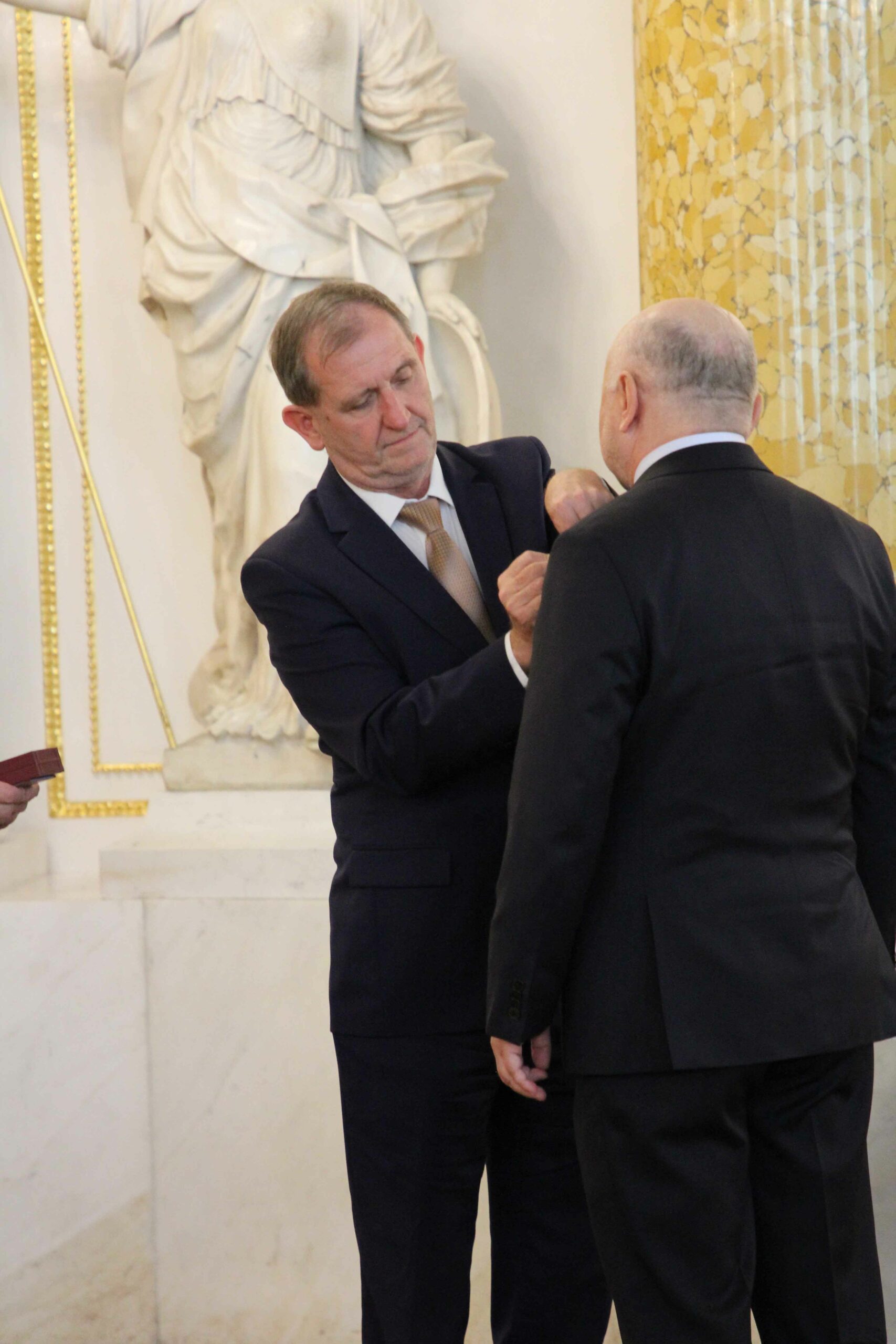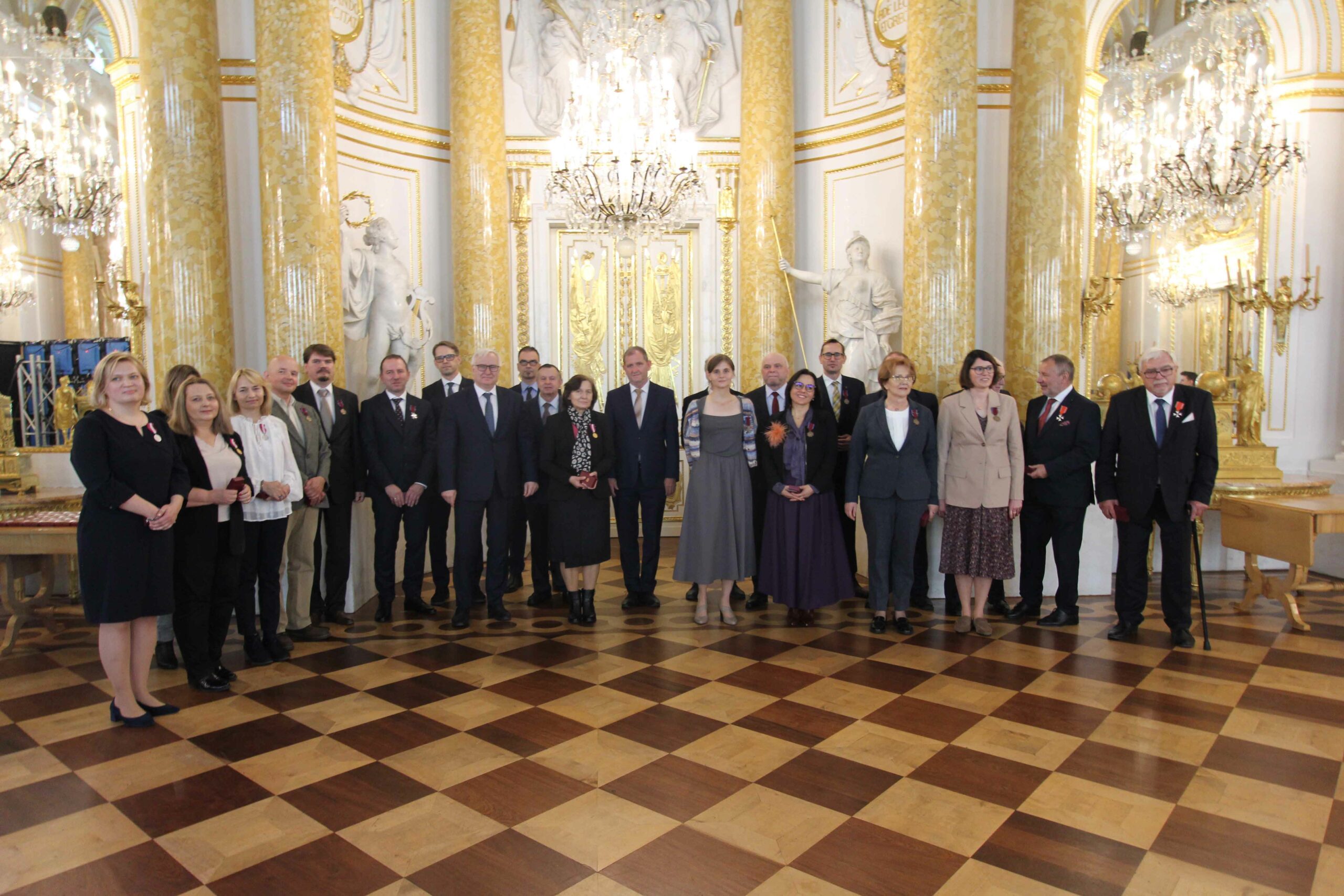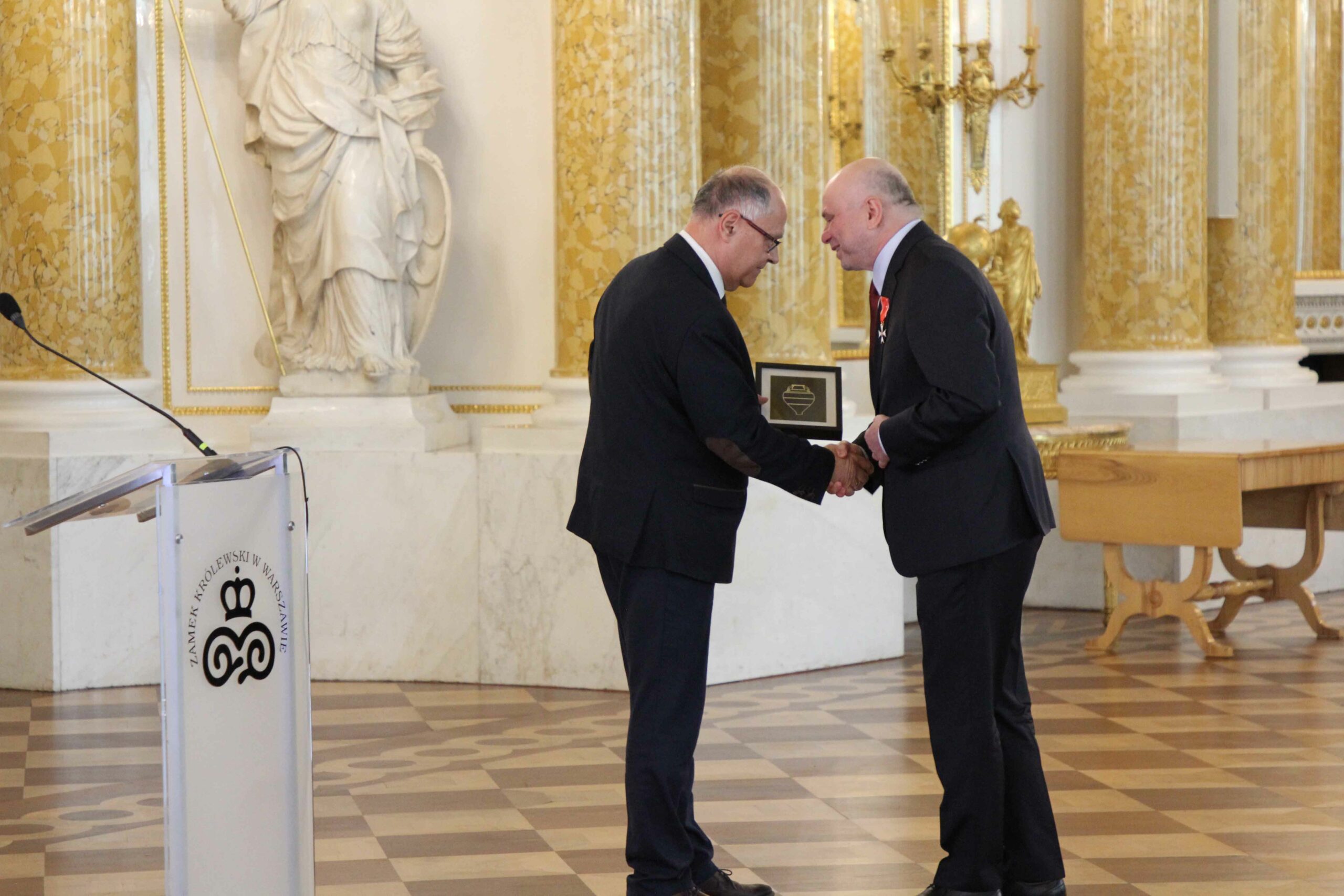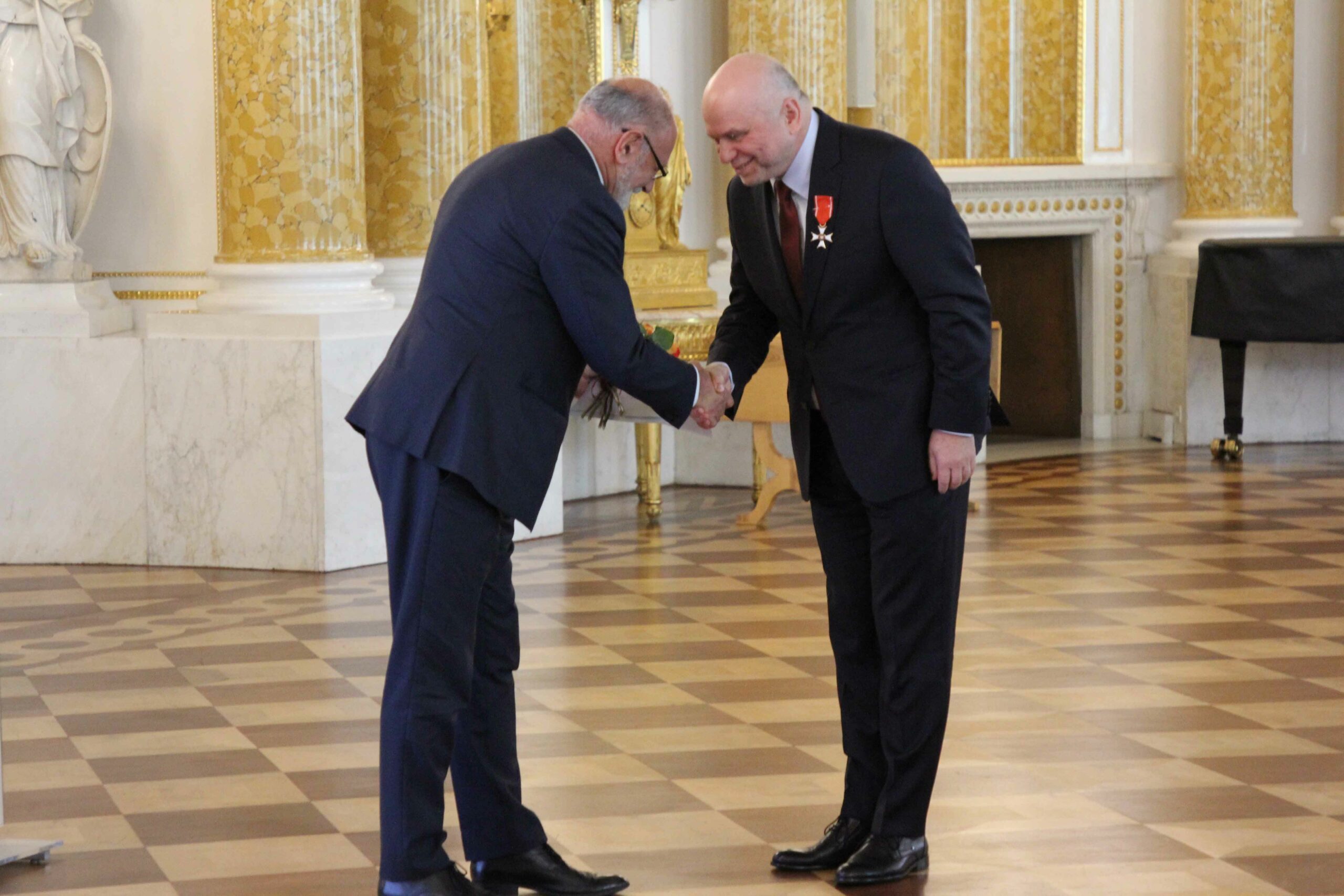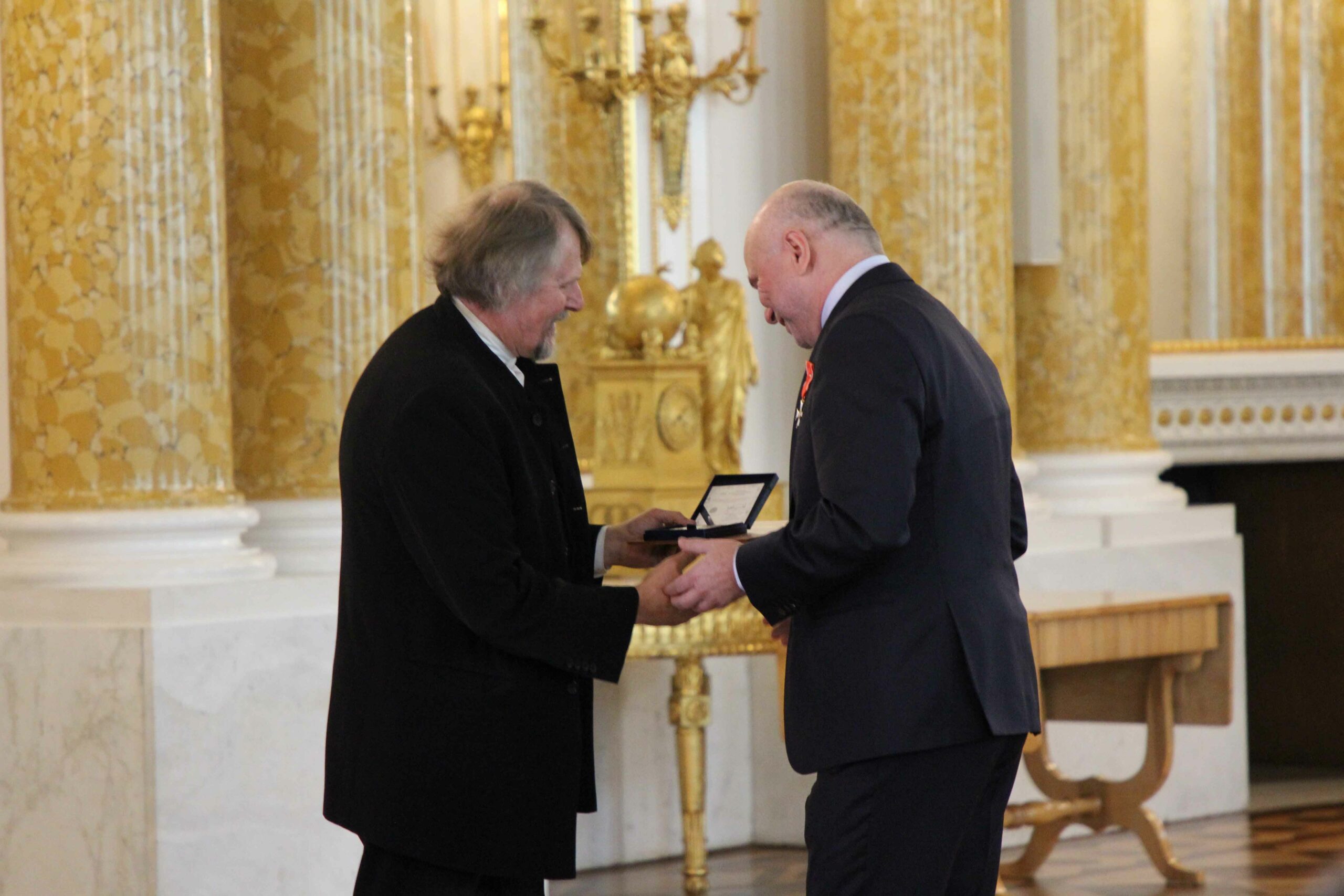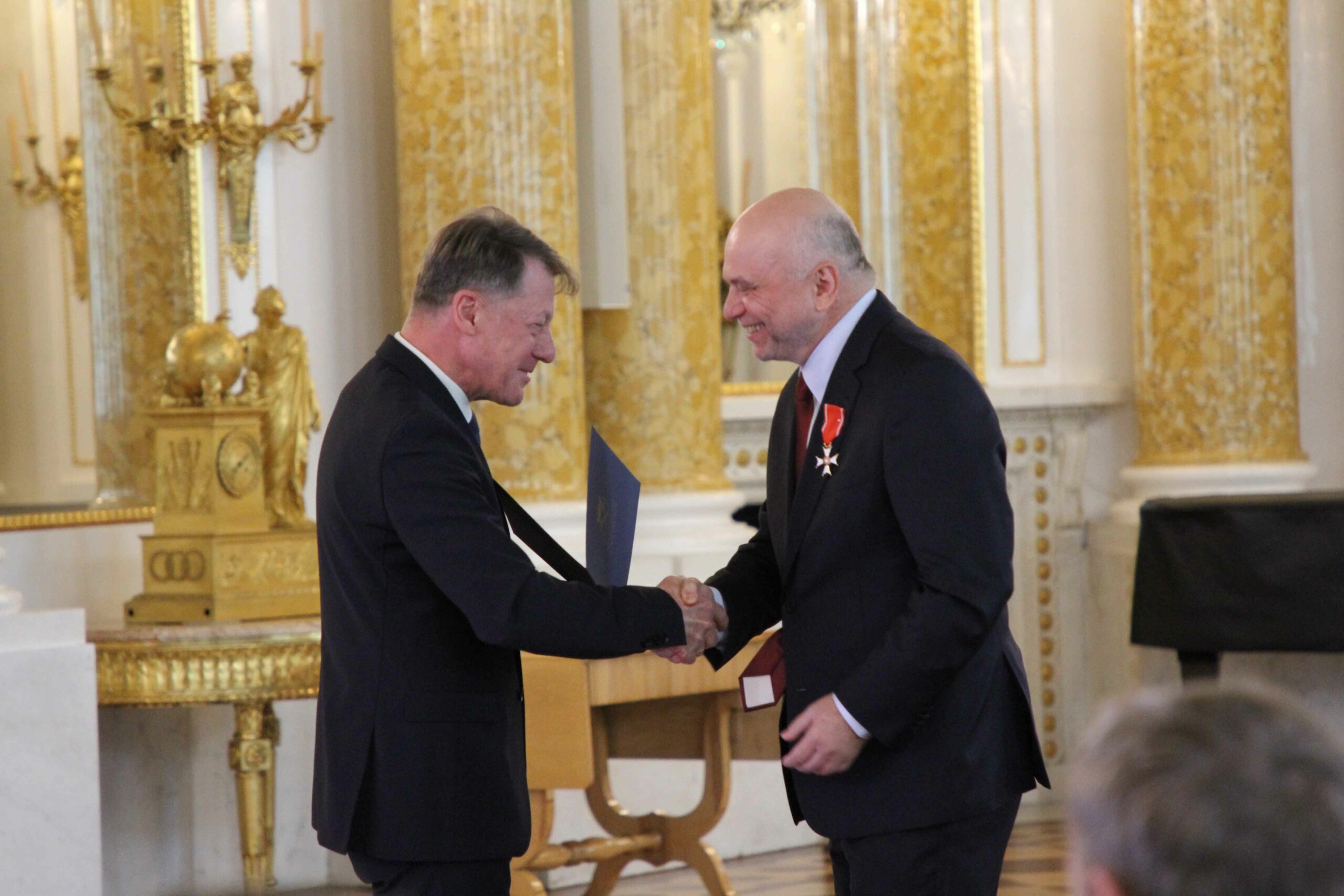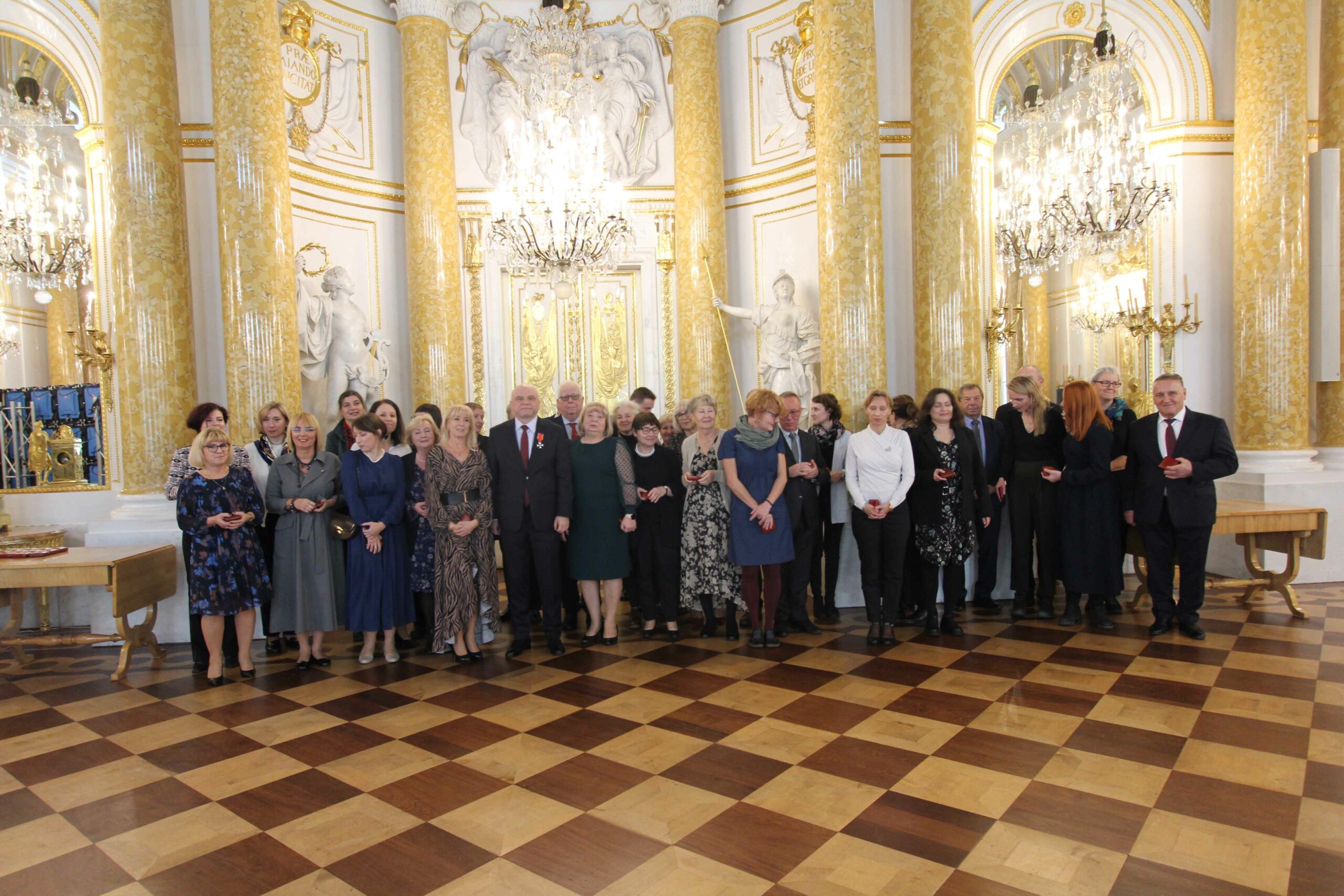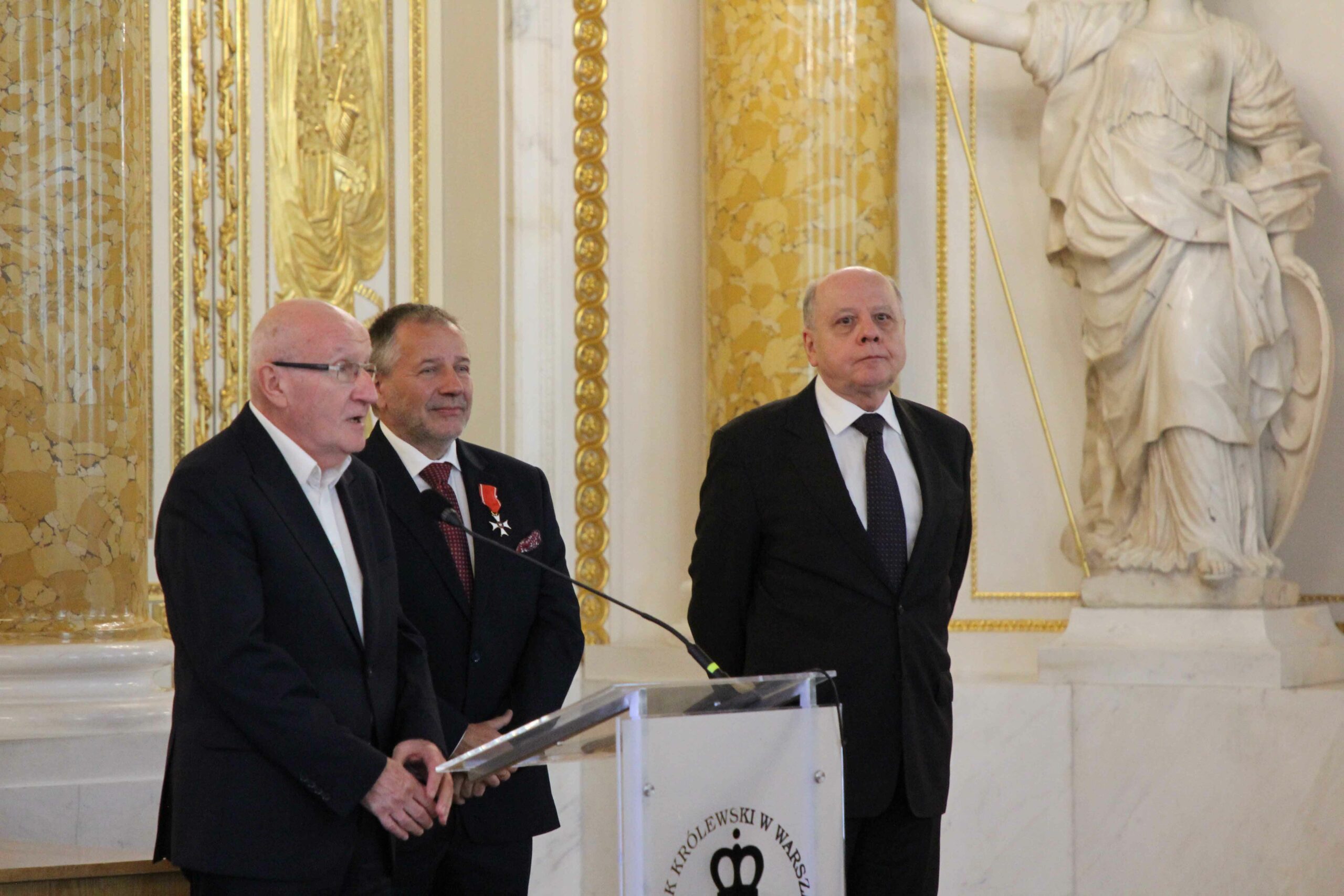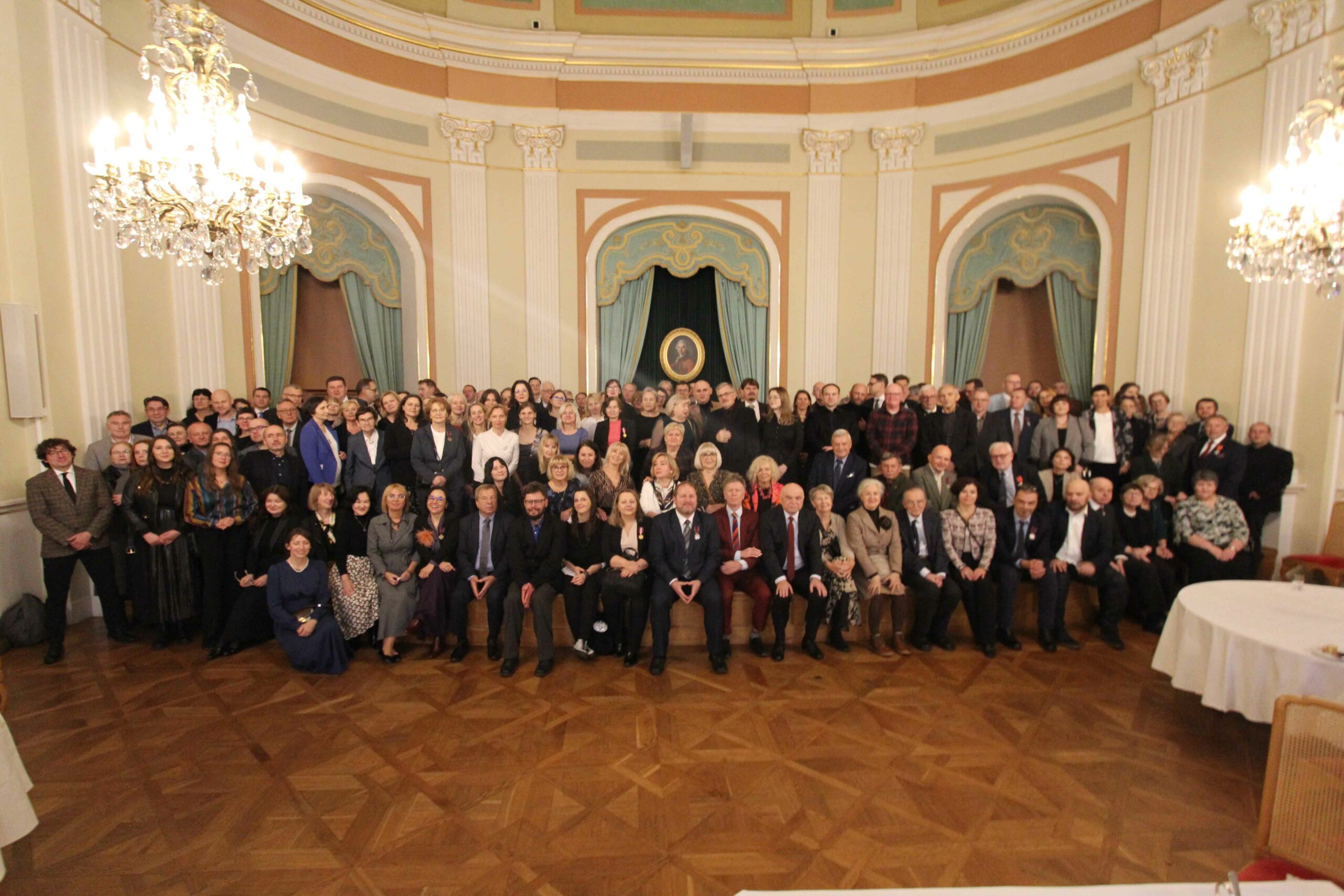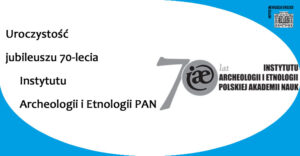
Uroczystość jubileuszu 70-lecia Instytutu Archeologii i Etnologii PAN
15 listopada 2023
Nataliacoments closedW dniu 10 listopada 2023 r. na Zamku Królewskim w Warszawie odbyły się główne uroczystości związane z jubileuszem 70-lecia Instytutu Archeologii i Etnologii PAN. Spotkanie rozpoczęło się o godzinie 12.00 wystąpieniem Dyrektora Instytutu prof. dr hab. Mariana Rębkowskiego oraz prezentacją ostatnich osiągnieć Instytutu dokonaną przez Zastępcę Dyrektora ds. naukowych dr hab. prof. IAE PAN Bartłomieja Lisa. Kolejnym punktem uroczystości były wystąpienia Prezesa PAN oraz zaproszonych gości.
Doradca Prezydenta RP prof. dr hab. Andrzej Waśko wraz z Prezesem PAN prof. dr hab. Markiem Konarzewskim wręczyli odznaczenia państwowe i medale zasłużonym pracownikom Instytutu. Za wybitne zasługi dla rozwoju nauki polskiej Krzyżem Kawalerskim Orderu Odrodzenia Polski zostali odznaczeni Maria Deka, Dariusz Główka, Tomasz Herbich, Jerzy Maik, Sławomir Moździoch oraz Marian Rębkowski. Srebrny i Brązowe Krzyże Zasługi otrzymało kilkunastu pracowników IAE PAN. Za wzorowe, wyjątkowo sumienne wykonywanie obowiązków wynikających z pracy zawodowej zostały również przyznane Złote i Srebrne Medale za długoletnią służbę.
Po uroczystym wręczeniu odznaczeń oraz pamiątkowych medali prof. dr hab. Andrzej Klonder wraz z dr hab. prof. IAE PAN Dariuszem Główką oraz dr hab. prof. IAE PAN Andrzejem Janeczkiem zaprezentowali publikację jubileuszową zatytułowaną Ludzie – miejsca – badania. Instytut Archeologii i Etnologii Polskiej Akademii Nauk w latach 1953-2023. Była to ostatnia część oficjalnej uroczystości, później odbyło się spotkanie towarzyskie.
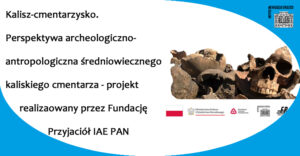
Kalisz - cmentarzysko. Perspektywa archeologiczno-antropologiczna średniowiecznego kaliskiego cmentarza - projekt realizowany przez Fundację Przyjaciół Instytutu Archeologii i Etnologii PAN
06 września 2023
Nataliacoments closed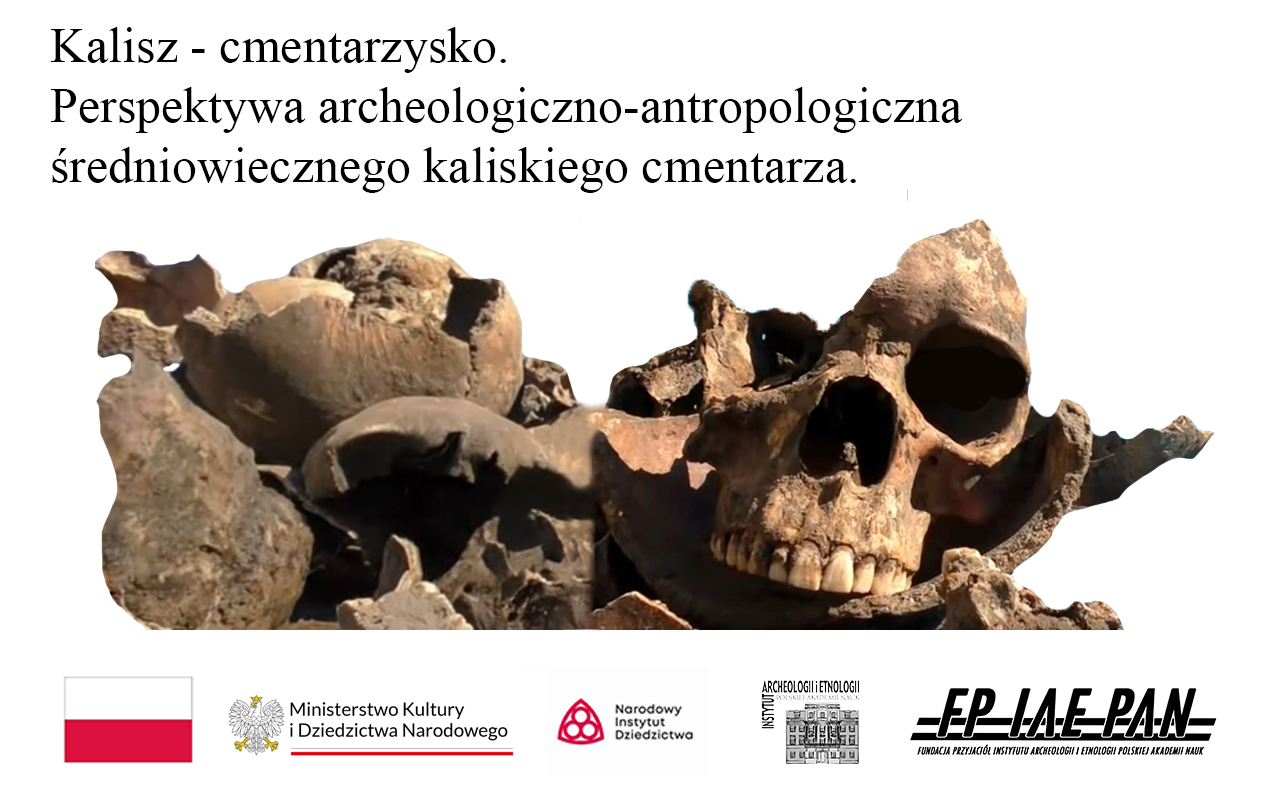
Celem projektu jest opracowanie, przygotowanie do druku i publikacja wyników badań archeologicznych przeprowadzonych na stanowisku Kalisz Stare Miasto-Cmentarzysko w latach 1990 oraz 2005-2006. Pozyskane materiały pozwalają na datowanie użytkowania terenu na okres od połowy X do XIV wieku. Efektem realizacji projektu będzie publikacja o charakterze korpusu źródeł. Pełen zasób danych dotyczących charakterystyki jednostek stratygraficznych, znalezisk oraz dokumentacji zamieszczony zostanie w części katalogowej. W części opisowej omówione zostaną wyróżnione fazy użytkowania stanowiska, wraz ze zbiorczą charakterystyką procesów stratyfikacyjnych. Analizę archeologiczną uzupełnią informacje dotyczące geomorfologii i przemian środowiskowych badanego terenu. Istotną częścią będzie prezentacja i opis materiału antropologicznego. Całość uzupełni krytyczna analiza podstaw datowania, analiza materiału ceramicznego i archeozoologicznego oraz prezentacja znalezisk ruchomych.
Na kanale ArcheoTV na YouTube znajduje się film opowiadający o badaniach średniowiecznego Kaliskiego cmentarzyska. Aby włączyć film wystarczy kliknąć na zdjęcie poniżej.
Partnerami Fundacji w realizacji niniejszego projektu są:
Instytut Archeologii i Etnologii Polskiej Akademii Nauk,
Pomorski Uniwersytet Medyczny w Szczecinie.
Głównym realizatorami projektu są
- Dariusz Wyczółkowski - archeologia,
- Agata Bisiecka - antropologia,
Projekt dofinansowano ze środków Ministra Kultury i Dziedzictwa Narodowego
pochodzących z Funduszu Promocji Kultury – państwowego funduszu celowego.
Finansowanie projektu:
Ministerstwo Kultury i Dziedzictwa Narodowego,
Instytut Archeologii i Etnologii Polskiej Akademii Nauk,
Pomorski Uniwersytet Medyczny w Szczecinie.
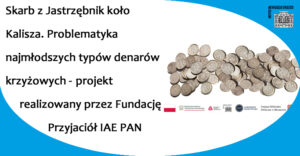
Skarb z Jastrzębnik koło Kalisza. Problematyka najmłodszych typów denarów krzyżowych-projekt realizowany przez Fundację Przyjaciół Instytutu Archeologii i Etnologii PAN
04 września 2023
Nataliacoments closed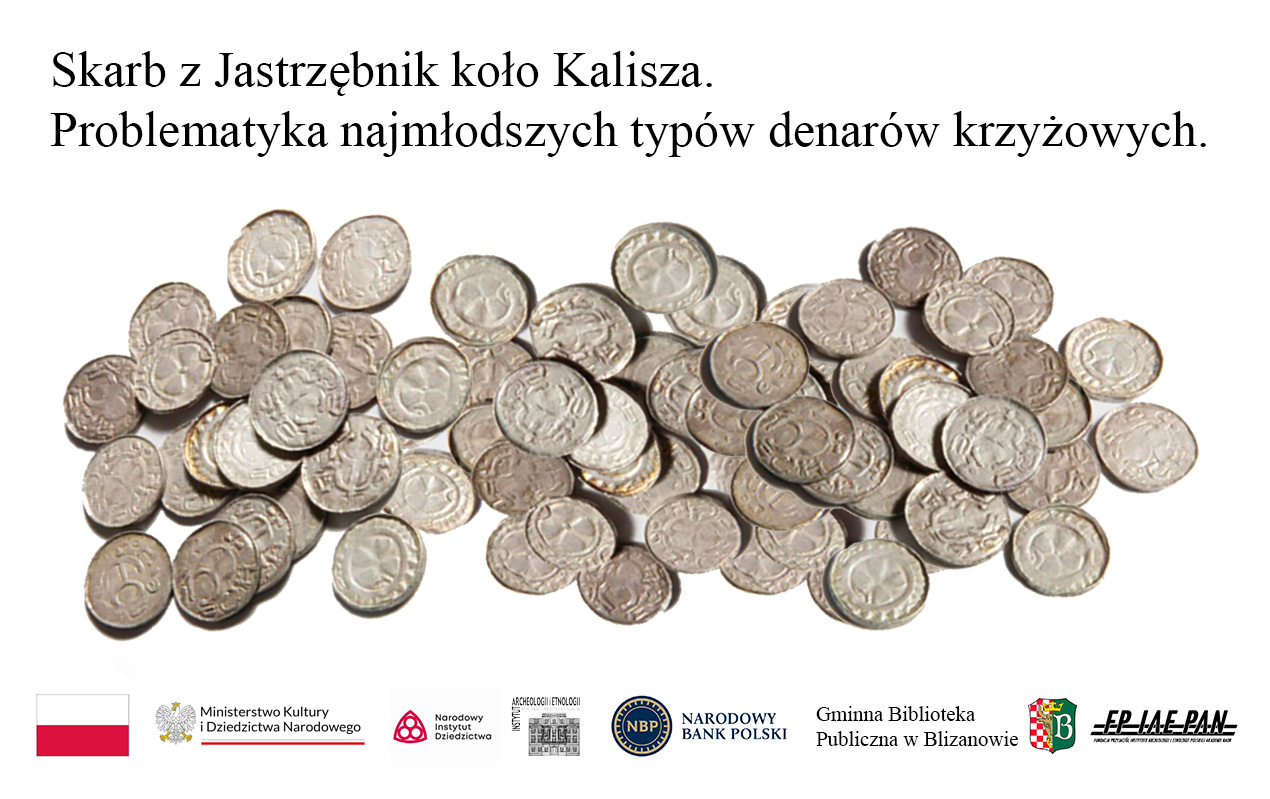
Partnerem Fundacji w realizacji niniejszego projektu jest
Instytut Archeologii i Etnologii Polskiej Akademii Nauk,
Głównym realizatorem projektu jest dr Adam Kędzierski.
Projekt dofinansowano ze środków Ministra Kultury i Dziedzictwa Narodowego
pochodzących z Funduszu Promocji Kultury – państwowego funduszu celowego.
Finansowanie projektu:
Ministerstwo Kultury i Dziedzictwa Narodowego,
Instytut Archeologii i Etnologii Polskiej Akademii Nauk,
Narodowy Bank Polski,
Gminna Biblioteka Publiczna w Blizanowie
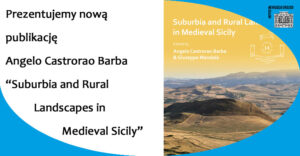
Prezentujemy nową publikację Angelo Castrorao Barba "Suburbia and Rural Landscapes in Medieval Sicily"
28 lipca 2023
Nataliacoments closed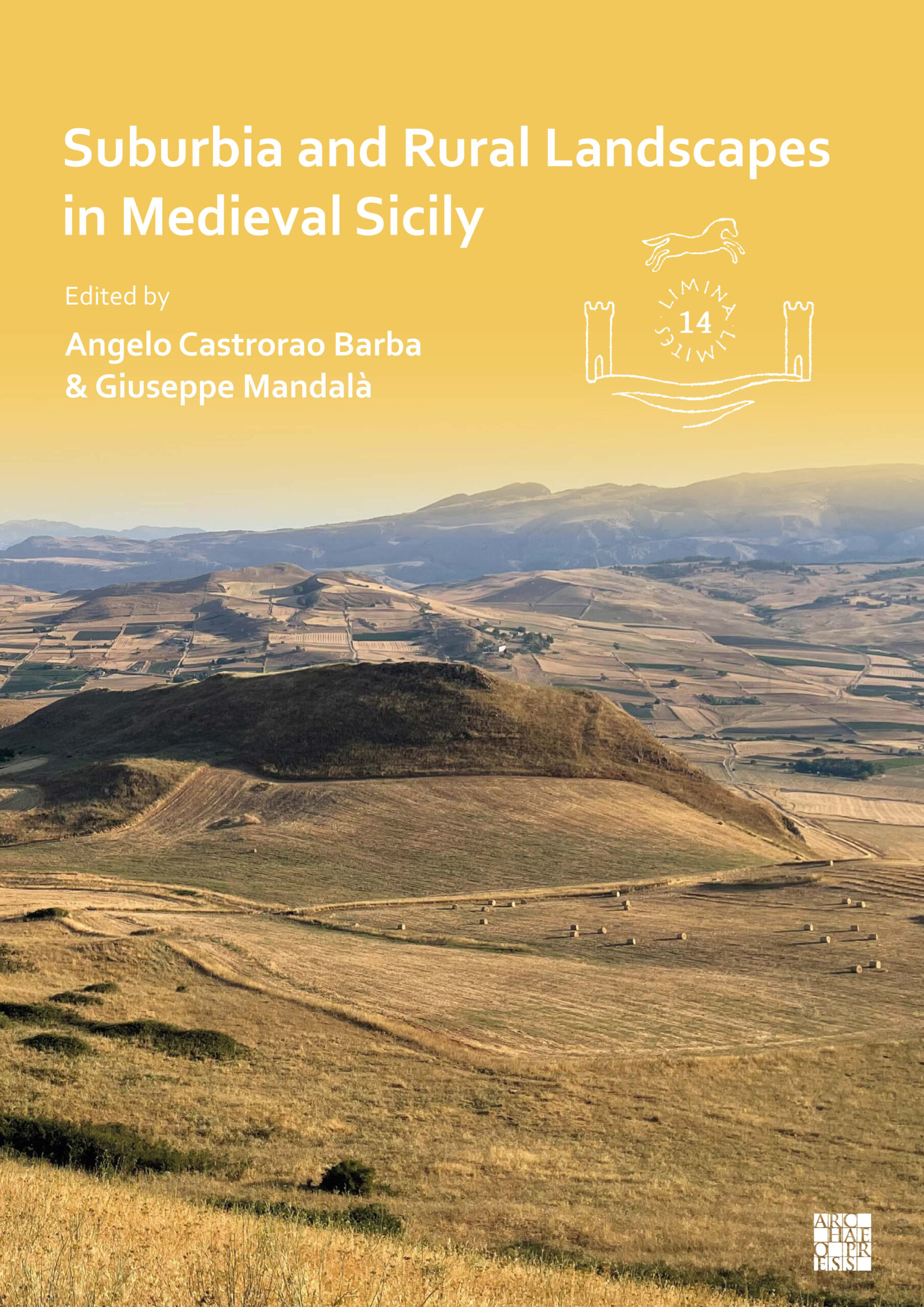
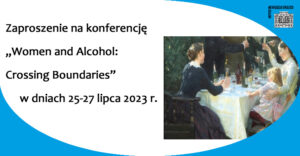
Zaproszenie na konferencję „Women and Alcohol: Crossing Boundaries”
19 lipca 2023
Nataliacoments closed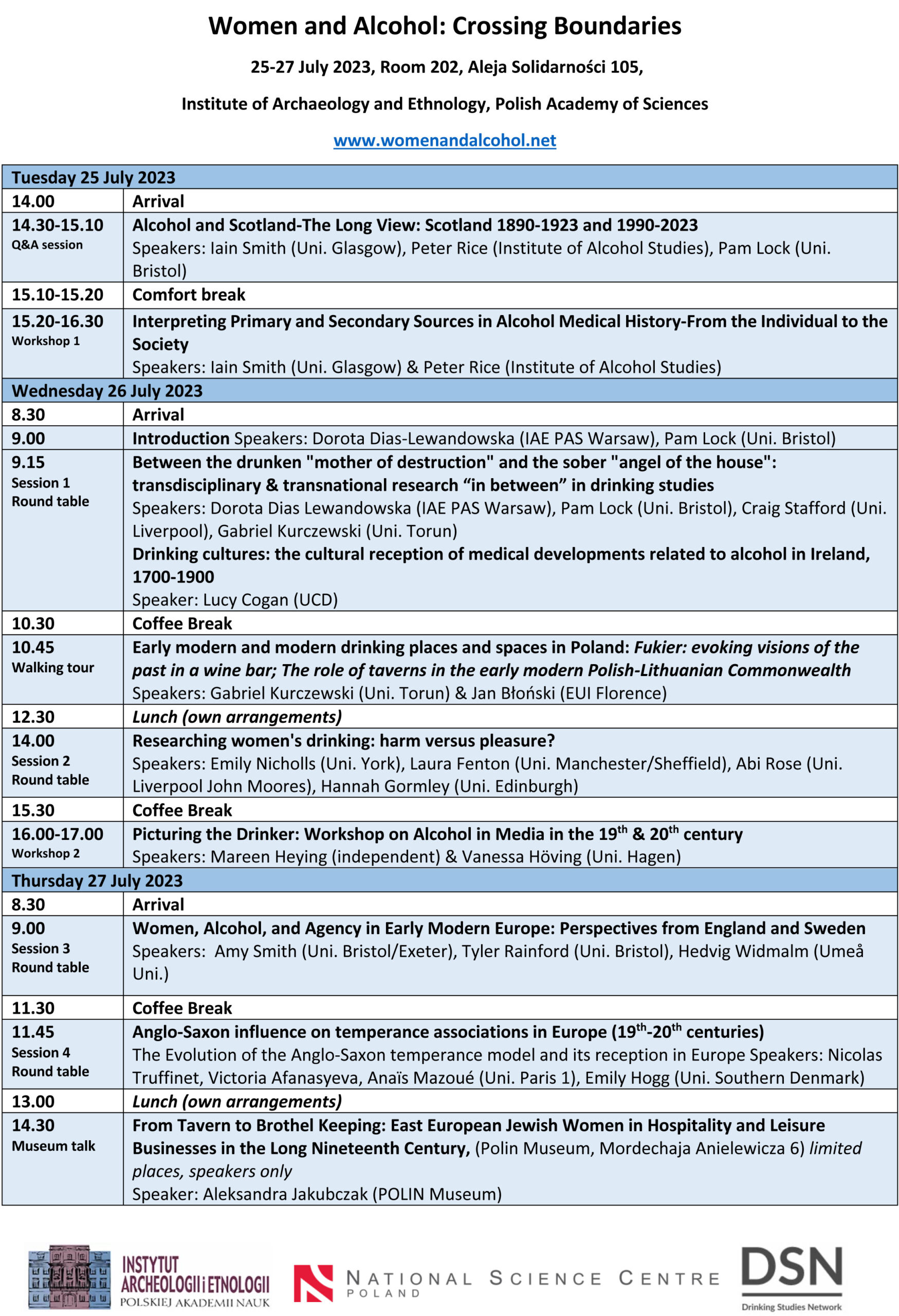
W dniach 25-27 lipca 2023 w Instytucie Archeologii i Etnologii PAN (al. Solidarności 105, sala 202) odbędzie się międzynarodowa konferencja „Women and Alcohol: Crossing Boundaries”.
Formularz rejestracyjny https://forms.office.com/Pages/ResponsePage.aspx?id=MH_ksn3NTkql2rGM8aQVGxkUkc2AHJZIvXSpeYeAkpxURjFKNUxPVVlaODlOS0ZHU1VTNlhTRk03Ri4u
Konferencja będzie transmitowana za pomocą aplikacji Zoom. W celu uzyskania linku do spotkania prosimy o wiadomość na adres dsnwomencluster@gmail.com
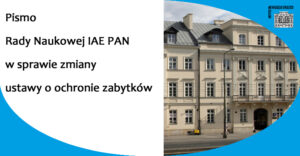
Pismo Rady Naukowej IAE PAN w sprawie zmiany ustawy o ochronie zabytków
17 lipca 2023
Nataliacoments closed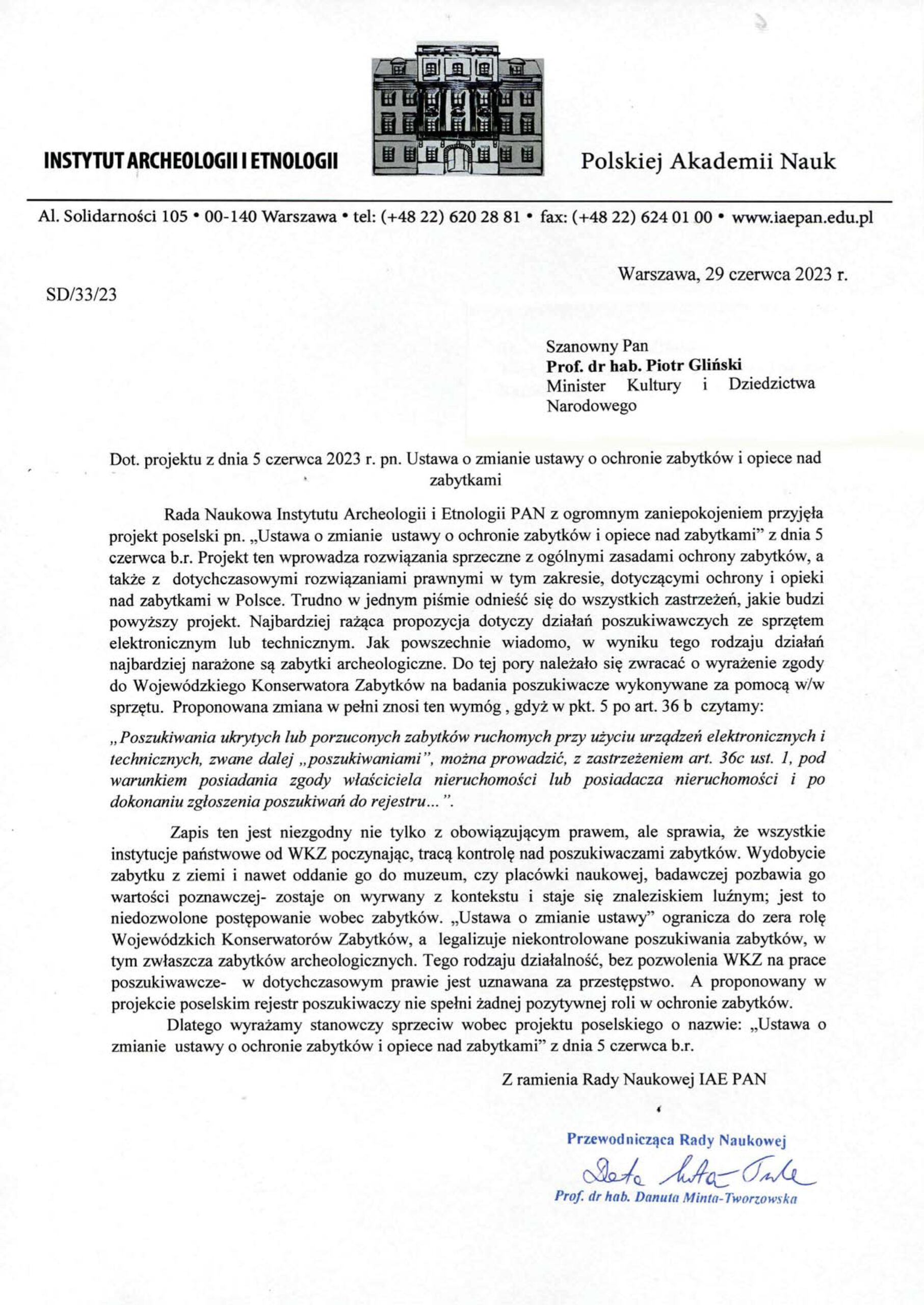
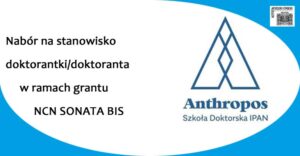
Nabór na stanowisko doktorantki/doktoranta w ramach grantu NCN SONATA BIS
23 czerwca 2023
Nataliacoments closed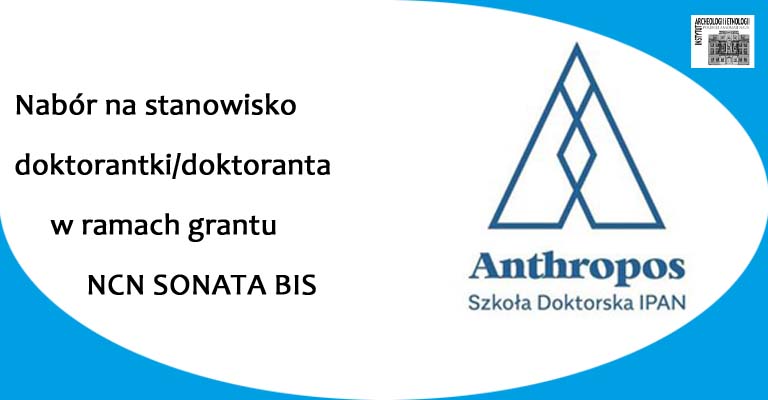
Instytut Archeologii i Etnologii PAN oraz Szkoła Doktorska Anthropos Instytutów PAN zapraszają
do wzięcia udziału w rekrutacji na stanowisko doktorantki/doktoranta w ramach grantu NCN SONATA BIS Tworzenie historii średniowiecza w praktykach religijnych rzymskiego katolicyzmu i współczesnego pogaństwa w Polsce nr 2022/46/E/HS3/00118
kierowniczka projektu: dr hab. Kamila Baraniecka-Olszewska
Nazwa stanowiska: doktorantka/doktorant (2 osoby)
Typ konkursu NCN: SONATA BIS – HS
Opis stanowiska: w grancie przewidziano dwa stanowiska dla doktorantek lub doktorantów. Jedno związane z badaniami nad tworzeniem historii średniowiecza w praktykach współczesnego pogaństwa, drugie związane z badaniami nad tworzeniem historii średniowiecza w praktykach rzymskiego katolicyzmu. W ramach projektu zapewnione jest finansowanie delegacji na badania terenowe (do wysokości określonej w grancie), udział w wybranych konferencjach naukowych, a także tłumaczenie lub redakcja językowa tekstów wybranych do publikacji.
Dyscyplina: etnologia i antropologia kulturowa
Zakres prac:
- uczestnictwo w spotkaniach i seminariach zespołu badawczego,
- prowadzenie etnograficznych badań terenowych w trzech regionach: Małopolsce, Wielkopolsce i na Pomorzu pod nadzorem członków i członkiń zespołu badawczego,
- prowadzenie badań związanych z pracą doktorską nad jednym z dwóch zagadnień badawczych: tworzenie historii średniowiecza w praktykach rzymskiego katolicyzmu lub współczesnego pogaństwa,
- transkrypcja wywiadów,
- przygotowanie raportów z badań,
- katalogowanie danych badawczych w projekcie,
- przygotowanie w ciągu 4 lat rozprawy doktorskiej,
- upowszechnianie wyników badań (udział w konferencjach naukowych, przygotowanie publikacji, udział w wydarzeniach promujących badania).
Wymagania:
- magisterium z zakresu nauk humanistycznych lub społecznych,
- zainteresowanie antropologią religii,
- doświadczenie w prowadzeniu badań terenowych i znajomość metod prowadzenia badań jakościowych,
- doskonała znajomość języka polskiego (co najmniej C1) i angielskiego (co najmniej B2)
- silna motywacja do pracy naukowej i przygotowania rozprawy doktorskiej,
- dyspozycyjność: prace terenowe oraz prace koncepcyjne w grantowym zespole badawczym będą wymagały dużego zaangażowania czasowego.
Warunki zatrudnienia w ramach grantu:
Planowana data rozpoczęcia zatrudnienia: 1 października 2023 r.
Forma zatrudnienia: stypendium
(Stypendium przyznawane jest zgodnie z zasadami przyznawania stypendiów doktorskich w Regulaminie przyznawania środków na realizację zadań finansowanych przez Narodowe Centrum Nauki w zakresie projektów badawczych).
Czas pobierania stypendium: 48 miesięcy
Wysokość stypendium: zgodna z ustawą o Prawo o szkolnictwie wyższym i nauce z dnia 20 lipca 2018 roku. Kwoty te będą pomniejszone o odpowiednie składki.
Link do informacji o projekcie:
https://www.ncn.gov.pl/sites/default/files/listy-rankingowe/2022-06-15buti7za/streszczenia/565976-pl.pdf
Wymagane dokumenty:
- załączone formularze rekrutacyjne I i II (dostępne na stronie internetowej IAE PAN: http://iaepan.edu.pl/bip-2/) w dwóch plikach w formacie PDF, zawierające:
1) podanie o przyjęcie do Szkoły ze wskazaniem IAE PAN jako instytutu, w którym kandydat będzie realizować projekt badawczy, zaadresowane do kierowniczki Szkoły,
2) projekt pracy doktorskiej związanej zakresem tematycznym z projektem,
3) życiorys naukowy ze spisem publikacji i innych osiągnięć naukowych,
4) dane dotyczące kształcenia na studiach doktoranckich lub w innej szkole doktorskiej, jeśli dotyczy,
5) dane kontaktowe pracownika naukowego, który mógłby przedstawić własną opinię o kandydacie,
6) nazwisko i afiliację proponowanego kandydata na promotora, jeśli jest,
7) kopię odpisu dyplomu ukończenia studiów II stopnia lub jednolitych studiów magisterskich, lub zaświadczenie z miejsca kształcenia o uzyskaniu tytułu magistra (w przypadku cudzoziemców – dokumentu równorzędnego), lub zaświadczenie o dopuszczeniu do obrony, która odbędzie się przed 1 października 2021 r., lub zaświadczenie o realizowaniu „Diamentowego Grantu”,
8) kopię certyfikatu potwierdzającego znajomość języka obcego co najmniej na poziomie B2 (lub odpowiednik); w przypadku braku zaświadczenia część rozmowy kwalifikacyjnej może zostać przeprowadzona w języku obcym zgodnie z ust 5 pkt 1 §5 Zasad rekrutacji: http://iaepan.edu.pl/wp-content/uploads/2023/04/Anthropos_zasady-rekrutacji-IAE.pdf
- w osobnych plikach:
1) kwestionariusz osobowy (dostępny na stronie: http://iaepan.edu.pl/bip-2/),
2) fotografia twarzy kandydata umożliwiająca jego identyfikację,
3) kopia pracy magisterskiej, jej odpowiednika lub przykładowego tekstu naukowego w rozumieniu ust 9pkt 1 §5 Zasad rekrutacji: http://iaepan.edu.pl/wp-content/uploads/2023/04/Anthropos_zasady-rekrutacji-IAE.pdf
(w postaci elektronicznego pliku najlepiej w formacie PDF),
4) dla cudzoziemców spoza krajów członkowskich Unii Europejskiej: poświadczenie dyplomu ukończenia studiów lub dokumentu równorzędnego klauzulą apostille, lub uwierzytelnienia tych dokumentów za pośrednictwem Narodowej Agencji Wymiany Akademickiej (NAWA).
Dodatkowe informacje:
Dokumenty* należy przesłać do 27 sierpnia 2023 r.:
- Pocztą elektroniczną pod adresem anthropos@ihpan.edu.pl (w tytule dokumentu należy podać: DOKTORANT/KA – SONATA BIS IAE PAN).
- Kopie dokumentów należy ponadto przesłać pocztą elektroniczną pod adresem director@iaepan.edu.pl (w tytule dokumentu należy podać: DOKTORANT/KA – SONATA BIS IAE PAN).
Dokumenty, które zostaną przesłane po terminie określonym w ogłoszeniu rekrutacyjnym, nie będą oceniane. Przez złożenie dokumentów należy rozumieć ich wpłynięcie do dwóch podmiotów wskazanych w ogłoszeniu.
Informacja o dopuszczeniu do rozmowy kwalifikacyjnej zostanie podana do 8 września 2023 roku. Rozmowy kwalifikacyjne w odbędą się w dniach 11-18 września 2023 w siedzibie IAE PAN, Al. Solidarności 105 w Warszawie. W uzasadnionych przypadkach rozmowy mogą odbyć się on-line.
Pytania dotyczące realizacji projektu można kierować na adres mailowy: kbaraniecka@iaepan.edu.pl
*Podane przez kandydata dane osobowe są przetwarzane przez Administratorów Danych wg umowy na współadministrowanie danymi osobowymi z 6 czerwca 2019 r., tj. Instytut Historii PAN z siedzibą w Warszawie, Rynek Starego Miasta 29/31 oraz Instytutu Archeologii i Etnologii PAN z siedzibą w Warszawie przy Al. Solidarności 105, na potrzeby procesu rekrutacji (procedury konkursowej). Podanie danych jest dobrowolne, ale konieczne do procesu rekrutacji. Dane będą przetwarzane przez czas niezbędny do przeprowadzenia rekrutacji, w tym archiwizacji. Dane mogą być przekazywane podmiotom zajmującym się obsługą techniczną i IT na rzecz Administratora Danych.
Osobie, której dane dotyczą, przysługuje prawo żądania dostępu do danych osobowych, ich sprostowania, usunięcia lub ograniczenia przetwarzania, a także prawo do przenoszenia danych i prawo do wniesienia skargi do Prezesa Urzędu Ochrony Danych Osobowych.
We wszelkich sprawach dotyczących przetwarzania danych osobowych prosimy o kontakt z Inspektorem Ochrony Danych: iodo@ihpan.edu.pl.
Szczegółowe informacje są dostępne na stronie: https://ihpan.edu.pl/oinstytucie/ochrona-danych-osobowych/.
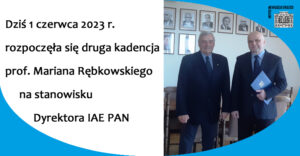
Dziś 1 czerwca 2023 r. rozpoczęła się druga kadencja prof. Mariana Rębkowskiego na stanowisku Dyrektora IAE PAN
01 czerwca 2023
Zbyszekcoments closed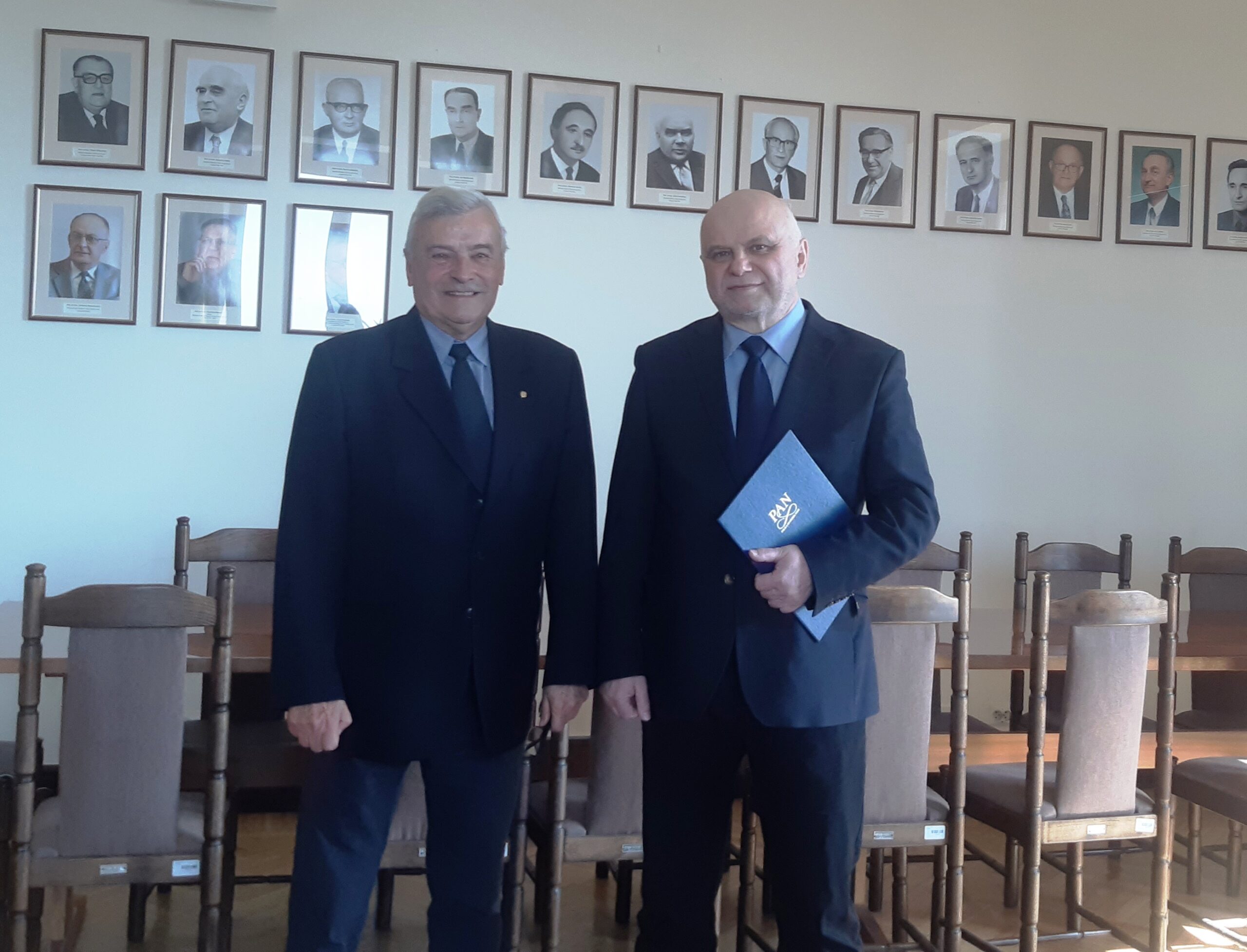
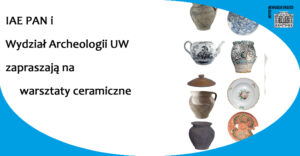
IAE PAN i Wydział Archeologii UW zapraszają na warsztaty ceramiczne
30 maja 2023
Zbyszekcoments closed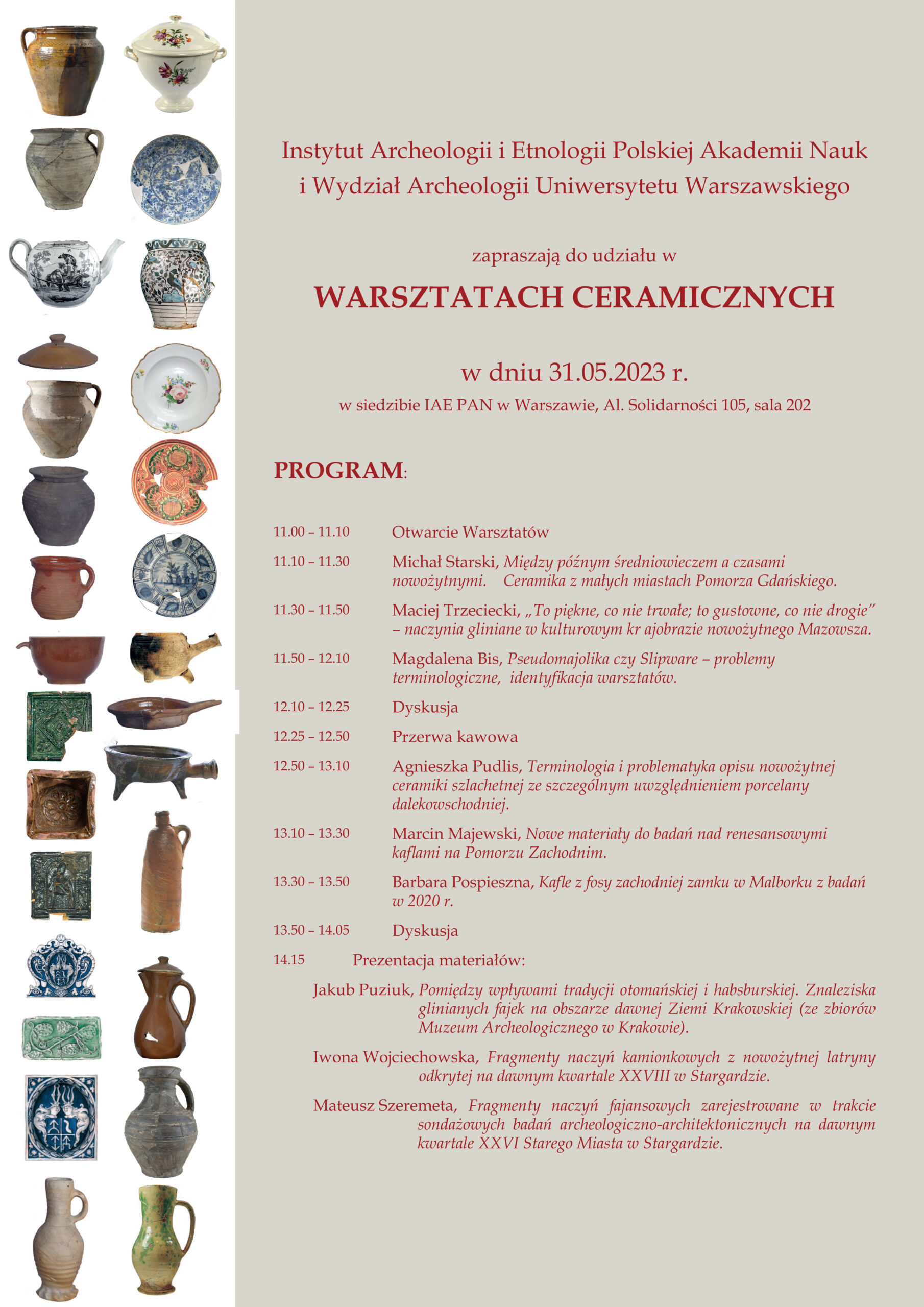
Instytut Archeologii i Etnologii PAN i Wydział Archeologii Uniwersytet Warszawski zapraszają do uczestnictwa w warsztatach ceramicznych, które odbędą się w dniu 31.05.2023 r. w budynku IAE PAN, mieszczącym się przy Al. Solidarności 105 w Warszawie, sala 202. Warsztaty organizują dr Magdalena Bis, dr Maciej Trzeciecki oraz dr Michał Starski.
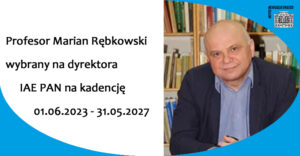
Prof. Marian Rębkowski wybrany po raz drugi na dyrektora IAE PAN
26 maja 2023
Zbyszekcoments closed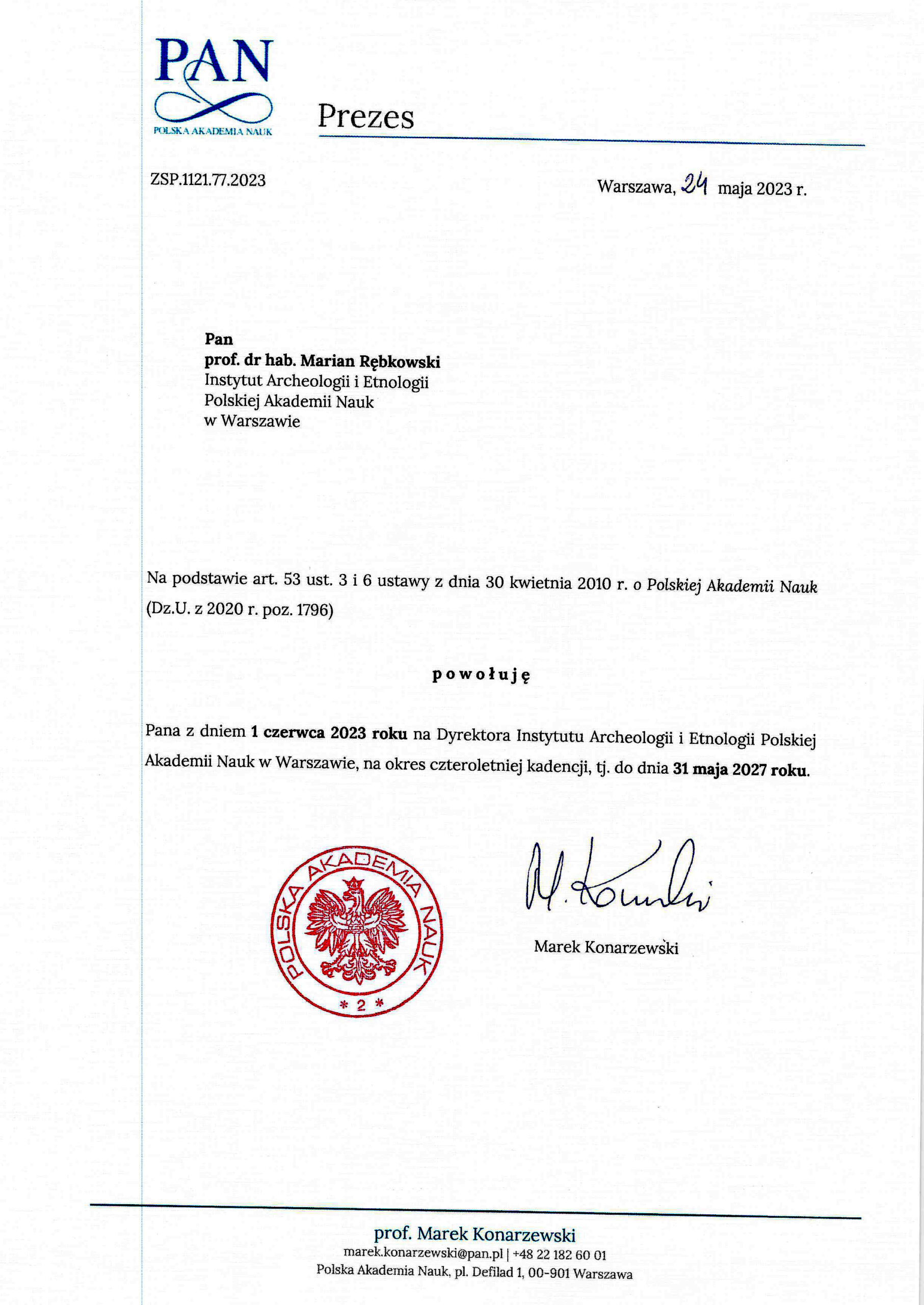
Informujemy, że prof. dr hab. Marian Rębkowski został ponownie wybrany na dyrektora Instytut Archeologii i Etnologii PAN na kadencję 1 czerwca 2023 r. - 31 maja 2027 r.



